April 20-24, Birmingham
Robotics & Market Insights
Guide to Robot Parts & Components and How to Source Them
You might have a robot (or several) and would like to know more about the user-replaceable components and parts. Or you might want to learn more about how the major robot assemblies function. In either case, you're in the right place!
The user-replaceable components of most robots include the end effectors, the sensors, and the robot controller. For mobile robots, the batteries will need to be periodically replaced. Important accessories for robots are the mount of a robot arm, and mounting systems to fasten sensors. The robot vision system may also be replaceable. There are, of course, many other smaller pieces and parts like LED displays and keypads. A complete listing of these is beyond our scope. In this article, we take a top-down look at some of the major assemblies and their functions.
You can use HowToRobot to get quotes on robotic components. HowToRobot has a directory of over 16,000 robotics vendors. This means you can get an overview of the products available. You can decide on the precise components that are ideal for your robot. And you can compare the cost-effectiveness of competing products.
Contents of this article
- Robot End Effectors
- Robot Sensors
- Robot Controllers
- Robot Batteries
- Robot Base / Mounting Systems
- Robot Safety Components
- Conveyor belts
- Vibrating feeders
- How to source the ideal robot part or component for your organization
Robot End Effectors
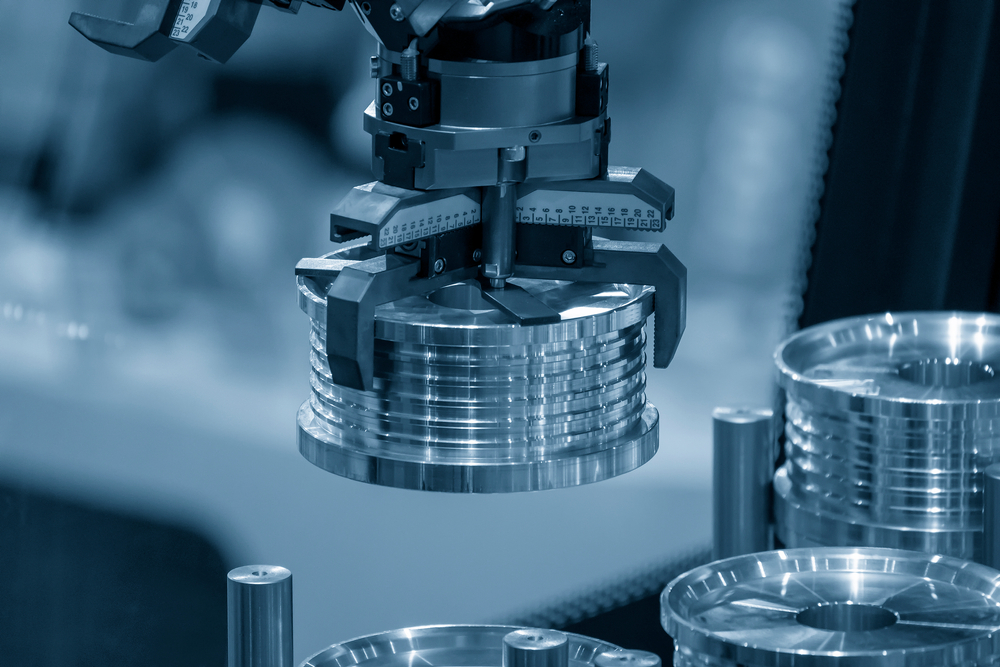
The end effector of a robotic arm is where the work happens. It’s where the contact between the robot and the workpiece happens. As with human beings, who use a very wide array of tools to get things done, so it is with robots.
Robotic end effectors are also called “End of Arm Tooling” or EoAT. The EoAT is in effect the wrist, hand, and tool of the robot. End effectors can be anything from a welding tool to a vacuum cleaner.
The EoAT could be a screwdriver or a rotating drill. Some companies specialize in making nothing but robotic end effectors. Many vendors focus on only certain kinds of EoAT.
It is often a good feature to be able to automatically change tools. A special fixture holds the tools. It is usually mounted on a surface external to the robot. The fixture can hold a variety of tools that the robot arm can swap in and out. In this way, the robot can perform different tasks on a workpiece. Here’s an example of how this feature can be used: A robot arm can drill a hole in a piece of metal. Then it swaps tools and deburs the hole it just made. The robot swaps tools again. And it uses a tapping tool to cut threads in the hole.
Robot Grippers
There are many different grippers available for robotic arms. A universal gripper has yet to be found. At first, designers thought the best approach would be to make a robot gripper that was like the human hand. Later, they began to change their thinking.
If the robot is supposed to lift boxes all day, does it need to have fingers on its hand? Probably not. For smaller boxes, a suction cup might be better. For larger boxes, it might be better to have a robot with two arms. The “hands” or grippers might be shaped like a sphere with knobs on them. For big and heavy boxes, it might be best to have prongs that can slip underneath the box and support it from below.
As with many things in life, “form follows function”. The kind of gripper you need, or set of grippers, will depend on your application.
Robot Sensors
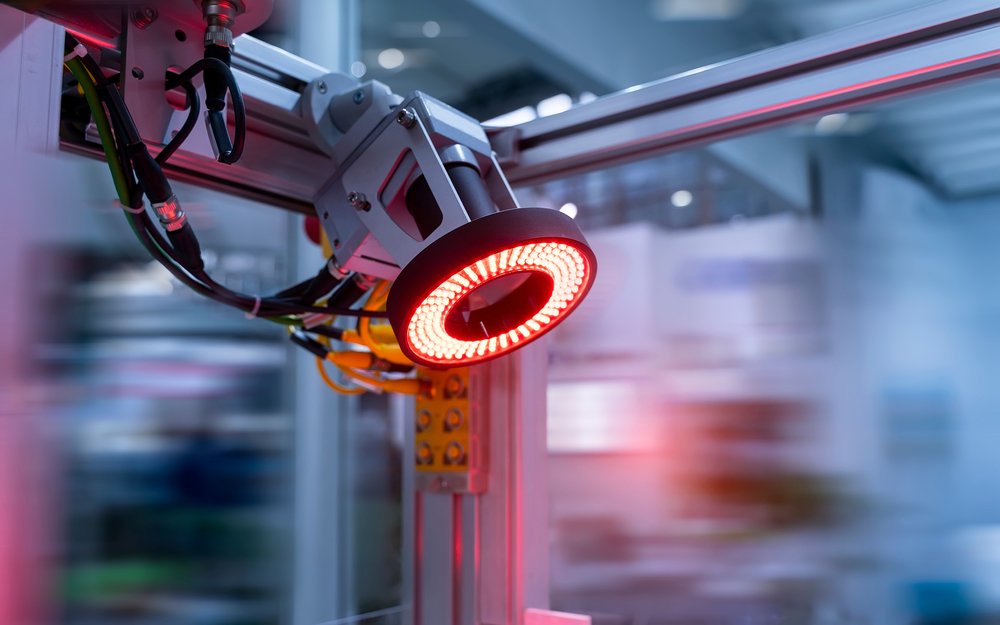
Robot sensors are like human senses. Robots can see, hear and have a sense of touch. They can even be supplied with a sense of smell and taste. Industrial robots might use a sense of “smell” to test air quality in a mine. They could detect noxious gases or leaking contaminants. There are also tasting robots. They can test the quality of food and discover the presence of harmful chemicals.
But the most common robotic sense currently used for industrial applications is for vision. Below we take a look at some of the main types of sensors for robotic vision.
Optical sensors
The variety of optical sensors now available for robots is impressive, indeed. Some sensors use optical methods to determine the roughness of a surface. Others can measure the thickness of a film. Still others discover the precise color of objects. A robot can be equipped with a microscope. This opens up a world of possibilities. Many measurements can be performed with a microscope.
Optical sensors can measure the rate of flow of a liquid. Flow can also be measured in other ways like with electromagnetic sensors. A kind of paddle wheel can also be used that sends pulses. The pulses occur more rapidly when the wheel is spinning faster.
Position and velocity can also be measured with optical sensors. The sensors don’t need to be cameras.
Laser scanners
The introduction of laser technology into industrial applications has changed the way many things are done. Lasers are used in handheld barcode scanners. They can make precise measurements of machined parts. Lasers are used to measure large distances, too. Complex vision systems use lasers. Computer vision means mobile robots can make their way autonomously, avoiding obstacles in their path.
Laser scanners for reading barcode labels are fast, accurate, and low cost. Some scanners are handheld and used by people in inventory management. Handheld laser scanners are also used in materials handling and manufacturing tasks. Laser barcode scanners can be put on Autonomous Mobile Robots (AMRs) in warehouses to help in the order picking process. Scanners can be mounted on aerial drones that fly through warehouse aisles. The drones read barcodes and use computer vision to count items in boxes. Aerial drones can take inventory in a fraction of the time it takes people to do it.
Laser barcode scanners are not the only way to keep track of items. One could use RFID-based scanners. RFID (Radio Frequency IDentification) has the advantage that the label need not be visible, and it can still be read. This is because RFID uses radio waves instead of light. But RFID labels are more expensive than bar codes.
One of the most common uses for laser scanners is for industrial robotic vision. These scanners use LiDAR, which stands for Light Detection And Ranging. LiDAR is like RADAR. Radar was invented during World War II and is short for RAdio Detection And Ranging. In both cases, the principle is similar. The LiDAR sensor sends out a pulse of electromagnetic energy and then it detects the reflection that bounces off the nearest object. The time it takes for the reflections to come back is measured. If it takes longer for the reflection to come back, the object is farther away. A shorter time means the object is closer. The time is proportional to the distance from the sensor to the object. In this way, lasers can be used to precisely measure distance to a single point.
Interesting Fact: NASA scientists invented LiDAR in the 1960s as part of the Apollo moonshot program. One of its earliest uses was to measure the distance between the earth and the moon.
LiDAR can be used in one dimension, 2-D, and 3-D. An example of LiDAR in one dimension is a laser tape measure. You can quickly and accurately measure the dimensions of a room or a building. For industrial applications, lasers are used to precisely measure the depth of a cut done by a machine tool or robotic milling machine. Robot arms with LiDAR can measure the size of a part for quality control.
In a 2-D configuration, a laser beam is scanned back and forth. The scanning might go in a complete circle or it might go only through a part of the circle. The laser beam stays within a two-dimensional plane. For an Autonomous Mobile Robot (AMR), this plane is horizontal. It is often a few centimeters above the ground. In this way, the AMR can use its LiDAR to detect objects in its pathway. The robot uses this awareness to determine whether it is safe to proceed along the planned route. If there is something blocking its path, the robot can swerve or stop.
But 2-D LiDAR has the limitation that it cannot detect objects above or below the plane of the laser scanning. In effect, the robot is “blind” to anything that is not in the plane of the 2-D LiDAR. Using 3-D LiDAR can overcome this limitation.
With 3-D LiDAR, the system scans the laser beam in a plane (like 2-D LiDAR), and then the plane is tilted up and down. Adding the tilting action means the system covers a three-dimensional space. The drawback to 3-D scanning is that it requires more computing power. The system gathers much more information, so it is a challenge to process all that information and do it in real-time. This requires more powerful computers. Also, the mechanical components of 3-D LiDAR are more complex. Therefore, 3-D scanners are more expensive than 2-D scanners. It all depends on the application, whether 2-D or 3-D scanning is appropriate.
Of course, there are limitations to LiDAR. Direct sunlight can blind a LiDAR sensor. However, LiDAR can handle more intense sunlight than many kinds of sensors. The object which reflects the laser beam can affect things. The kind of material and the color of the reflecting objects can affect the accuracy of LiDAR. Dust, dirt, and debris can clog the lens of a LiDAR sensor. This will reduce the sensor’s sensitivity and accuracy.
Vision systems
Robot vision has been undergoing revolutionary changes. Not long ago, robot vision was very limited. So limited, in fact, that if a robot detected something was in its way, all it could do was stop and call for help. Today, autonomous mobile robots can swerve around obstacles in their way. They can tell the difference between people and inanimate objects.
The resolution and sensitivity of cameras have increased. The software which processes the visual data has also improved. Computer vision systems now recognize human faces.
The camera hardware is an important part of the vision solution. But recording raw data is not enough. The vision system must be able to turn that data into useful information. The vision system must be able to detect an object’s distance, speed, and direction. It is even more useful if the vision system can recognize that an object is a person or a forklift. The ability to understand that one object is a person, while another is a vehicle, is called semantics. Semantic understanding of an environment is crucial to making robots more intelligent.
Another use of computer vision is in order picking. The robot must be able to pick one object out, even when the object is in a pile of other things. This is called picking from clutter. The robot needs to identify not only the object, but also if the item is on its edge, or upside down. Once this is determined, the robot can decide how to pick the object up. This has proven challenging, but there are now systems that can do it.
Chances are there are robotic vision systems that will fit your requirements.
Robotic Vision through Sensor Fusion
More and more, robotic systems rely upon a combination of sensors. Each of the different kinds of sensors has strengths and weaknesses. Even one sensor can provide a kind of “vision” for a robotic system. But a combination of sensors is best. Combining the data from many sensors is called sensor fusion. Sensor fusion makes a robot more robust, reliable, and safe. As the computing power of microchips continues to grow, we can expect to see more sensors used. This will make robots more intelligent.
Robot Controllers
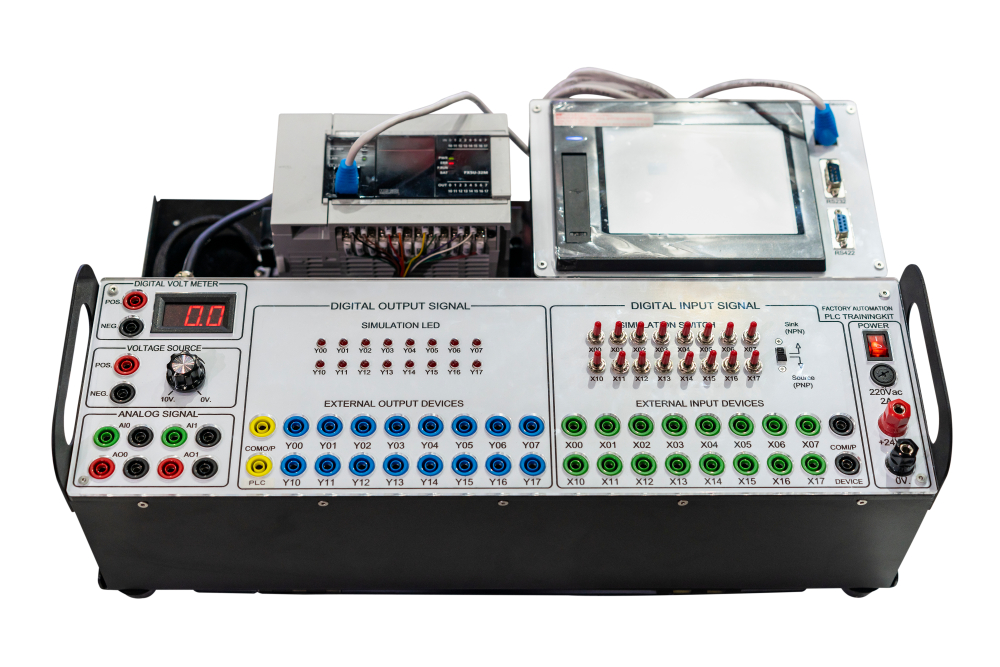
Robot controllers come in a variety of shapes and sizes. Some are small, handheld tablets. These are used to control a simple work cell. Other robot controllers can control complex manufacturing and logistics processes. The robot controller is crucial in determining how easy it is to get a robotic system to do what you want. The robot controller is a critical part of how well the robot performs its job.
Robot controllers are responsible for safety, logic, and motion control. How quickly a robot responds to an external event is often a critical measure of a robot controller. Some applications need a faster response time than others. This can determine the kind of robot controller needed. The Human-Machine Interface (HMI) of a robot controller is another important aspect. One popular HMI is a “teach pendant” that is a handheld, tablet-style device. The teach pendant is used when teaching the robot what to do. Once the robot is ready for production, the teach pendant can be removed.
In a factory, it is more common to find a hard-wired connection between a robot controller and the robot. The wired connection provides a reliable and safe interface. Safety regulations sometimes require a wired connection. This is not true for Autonomous Mobile Robots (AMRs). An AMR would not be of much use if it had to have a wire attached to its controller! Wireless industrial robot controllers are also available. Depending on the application, they may have advantages over the wired systems.
There are three broad categories of robotic controllers:
- PLC (Programmable Logic Controller),
- PAC (Programmable Automation Controller),
- IPC (Industrial Personal Computer).
The PLC is the oldest technology and the lowest cost type of robot controller. It is used for simple applications that do not need complex motion control. The data logging ability of a PLC is also less capable than other types of robot controllers. The PLC will have fewer kinds of input/output devices.
The PAC represents an updated version of the PLC. The PAC has more computing power and greater capability. There is a very broad range of applications for which a PAC is a good fit.
The IPC has the greatest computing power, and it is also the most expensive type of robot controller. It can handle complex motions and can communicate via a wide variety of interfaces. The IPC can handle and store very large amounts of data.
The distinctions between these three types of controllers become more blurred with time. Today, there are really not three separate categories of robot controllers. It is more of a continuum.
In deciding between different robot controllers, one important factor is software. Look for application-specific software packages. The application package will determine how easy it is to get up and running. It will also influence how much support you can expect for your particular needs.
Robot Batteries
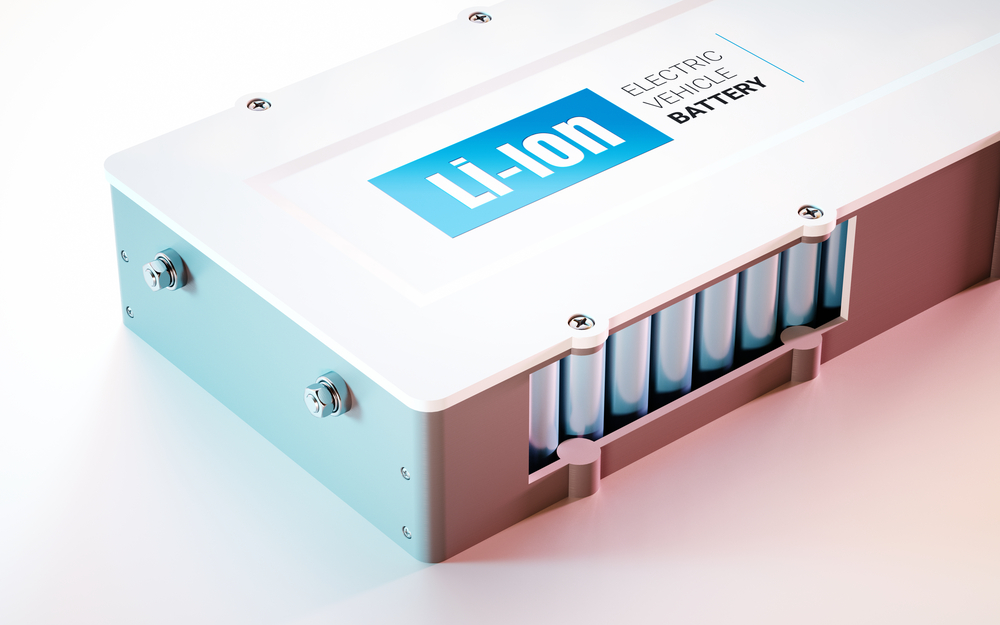
Evolving battery technology has affected a wide swath of electrical and electronic devices. Better batteries mean longer operating times and shorter charging intervals. The improvements have made Autonomous Mobile Robots (AMRs) practical and cost-effective.
Some of the basic things to consider when choosing the right robot battery for your use include chemistry, capacity, and charging.
The chemistry of a robot battery will generally be of the following types.
- NiMh: Nickel-Metal Hydride batteries are still the most common type of battery used for robots. They have a good value because of the weight to capacity ratio, and there is very little “memory effect”. The memory effect is a limitation of some kinds of batteries. It means you must discharge the battery completely before recharging it. Otherwise, you lose part of the battery capacity with each charge.
- NiCd (Nickel Cadmium) batteries suffer from the memory effect and are being replaced by the other battery types.
- Lead Acid batteries offer high capacity and low cost.
- LiPo (Lithium-ion Polymer) batteries are often simply called “lithium batteries”. They are fast becoming the battery of choice for robots because of their high capacity to weight ratio. They do not suffer from the memory effect.
Questions to ask when considering different batteries include: How long does it take to charge the battery? Does the battery charger have a safeguard against over-charging? Wireless charging can also be quite helpful for robots. It makes it easier to charge because the robot doesn’t need to be in a precise position when it reaches the charging station.
Robot Base / Mounting System
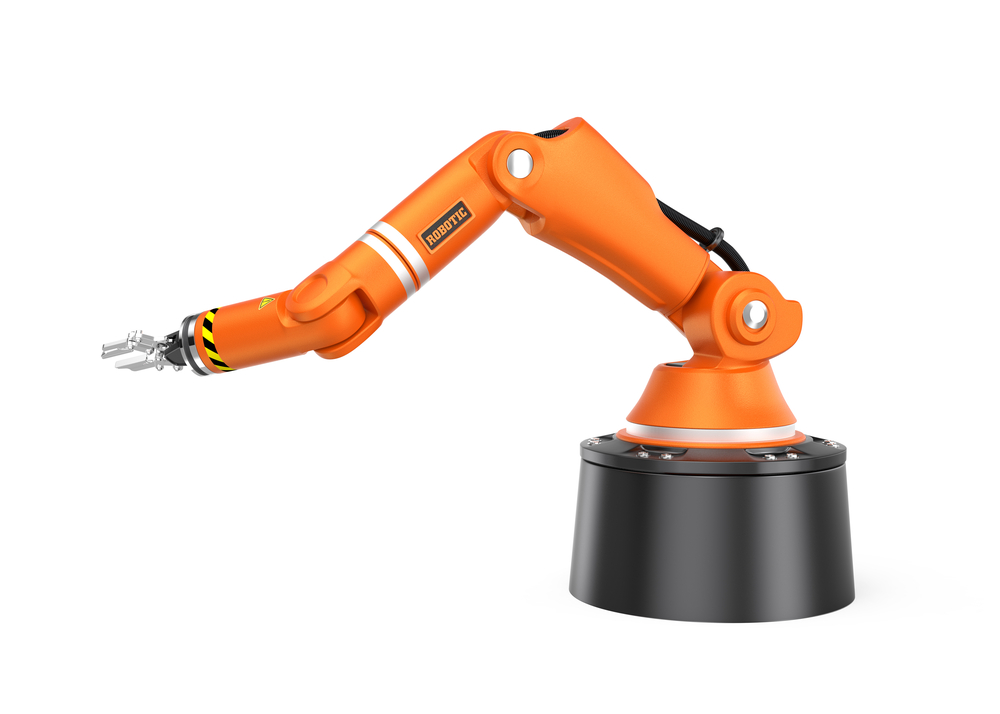
Stationary robots with robotic arms need to be securely mounted to perform their job. There are many options from which to choose.
A pedestal mount is useful when you need to elevate the robot arm. The arm may need to be raised up to access conveyor systems and work surfaces. Mounts can be bolted to the floor. Mounts can also have casters, so they can be easily moved around.
There are applications for which it is ideal to have the robot mounted in an inverted position. There are special mounts for this. An inverted orientation can often maximize the reach of the arm. Other applications might call for the robot to be mounted vertically. It might be fastened to the side of a machine. Once the position is determined, the software that comes with the robot arm will need to be adjusted.
Modular mounting systems are available for fastening sensors. Examples include cameras, cables, and hoses. Some sensor mounting systems are best for their strength and durability. Others emphasize flexibility and light weight for portability. Adjustable levers allow for proper positioning of the sensors and cables.
Robot Safety Components
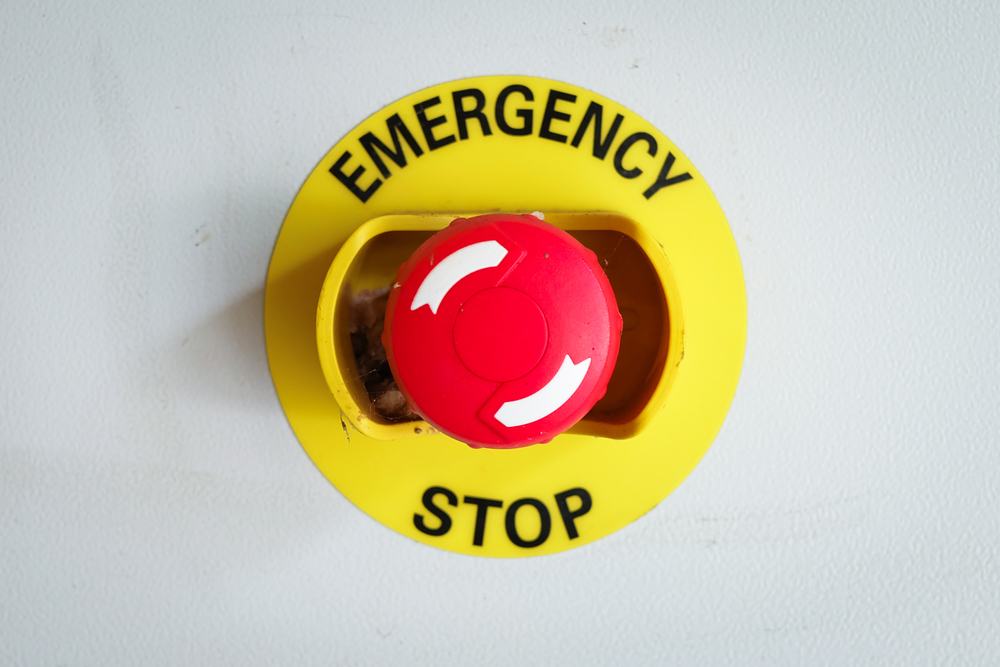
Robots can relieve people from dirty, dull, and dangerous work. And they can improve the safety of working conditions. Yet, if not used in the right way, robots can become a dangerous hazard. Making sure your automation solution is safe is of the utmost importance.
Robot Safety PLCs
An ordinary Programmable Logic Controller (PLC) will typically have one microprocessor. It will also have memory and input/output circuits. A safety PLC has redundancy built in. A safety PLC may have two, three, or four processors. Watchdog circuits check the health of each of the processors. If something goes wrong, the watchdog circuits sound an alarm.
Some PLCs will have an output without a corresponding input. In contrast, a safety PLC features matching inputs and outputs. This means tests can be constantly made to verify the proper connectivity and health of a circuit.
There are some applications where an ordinary PLC may be fine. A PLC will have emergency stop (e-Stop) functions. These can include light curtains or proximity sensors. This may be enough to provide safety for your associates. But there are many applications for which a safety PLC is the best choice. One costly mistake or accident can far outweigh the extra cost of a safety PLC.
Robot Safety Sensors / Laser Scanners / Light Fences
How can productivity and safety be improved at the same time? There are a variety of ways.
Laser area scanners can detect the presence of people near an industrial robot. The laser scanner can inform the robot to slow down if someone enters the outermost zone. The slower speed might be 50% of the usual speed. If someone enters a second zone, closer to the robot, the speed can be slowed to perhaps 25%. If a person is detected in the closest zone, the robot will stop. The user can determine the size of these zones. The user can customize what responses the robot makes.
A variety of safety devices can and should be used with robots. Bigger and heavier robots need a higher level of safety than smaller ones. One popular safety method is to use a light fence or a light curtain. The “fence” consists of beams of light around the industrial robot. If something breaks the light beams, the robot might go into an emergency stop, for example.
Robot Fencing

Sometimes the safest way to maintain productivity and safety is to fence off a robot into its own separate area. A variety of such fences are available. Different features include the height of the fence and the size of the openings in the fencing material. Fence posts with self-leveling feet built-in are sometimes desirable. The strength of the fence is also a consideration. Should the fencing be made of metal wire, perforated metal sheets, or Plexiglas? Your application may need a fencing material that protects against heat or electricity.
Conveyor belts

Robots and conveyor systems are frequent companions. The robot may take items off of a conveyor to begin its cycle, or it may place parts onto the conveyor at the end of its cycle. And, of course, it might do both.
There are many different types of conveyor systems from which to choose. Some conveyor systems are easy to sanitize. This makes them a good choice for food processing operations. Other features to consider are the speed and width of the conveyor system. Its height, angle of greatest incline, and the amount of weight it can handle are all considerations.
Vibrating feeders
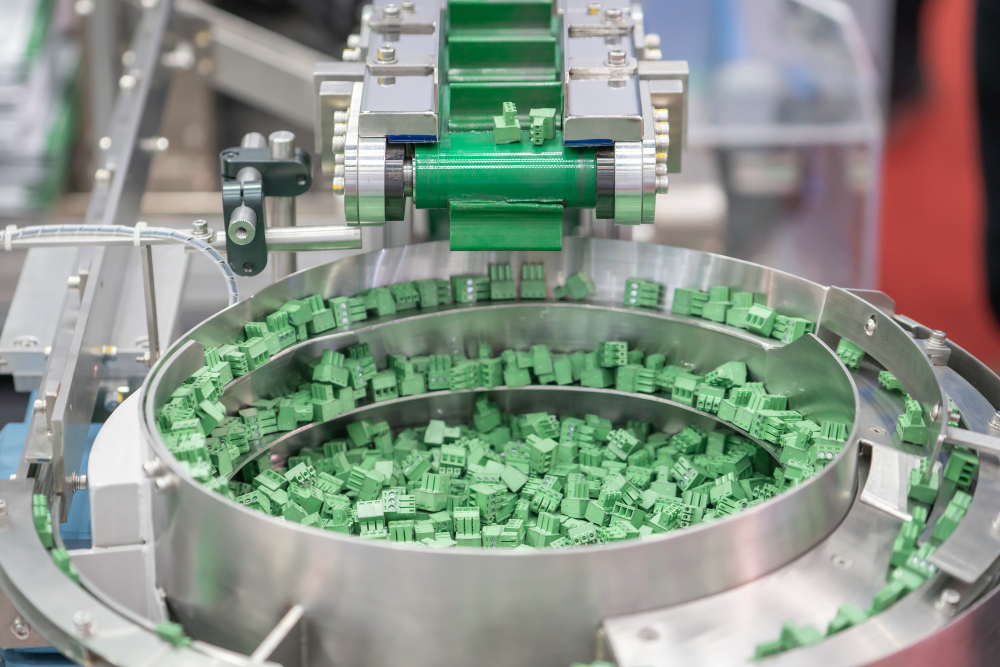
Robots combine well with vibrating feeders. This is especially so for pick-and-place and assembly operations. Small parts are fed into the vibrating feeder. The feeder then moves the parts to the robot. The feeder can put the parts so they are all in the same position. This makes it easier for the robot to pick them up.
How to source the ideal robot part or component for your organization
HowToRobot is a global platform helping companies to succeed with automation. HowToRobot has a worldwide directory of over 16,000 robotics companies. This means you can find the type of robotic component you need, ideally suited for your application.
You may already know what kind of part or component you want. If so, you can get quotes and receive product information and pricing from many vendors.
Please note there are impartial HowToRobot experts who can help you navigate through the process. Click here to set up a consultation with an expert advisor.
